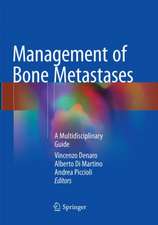Quality Improvement and Patient Safety in Orthopaedic Surgery
Editat de Julie Balch Samora, Kevin G. Sheaen Limba Engleză Paperback – 10 sep 2023
Utilizing a user-friendly approach including generous figures, tables, and bulleted key points, the text presents comprehensive background information on QI principles, models, and patient safety. More specifically, it focuses on orthopaedic concerns, such as biologics and implants, registries, checklists, surgical site infection risk reduction, use of evidence-based medicine and care maps, simulation to improve care, and shifting from volume to value, among others. Related topics such as diversityand inclusion, provider wellness strategies, leadership strategies to develop an efficient and safe work culture, and innovation are also presented. Throughout, the aim is to demonstrate that QI is a multidisciplinary goal that can only flourish in an environment of supportive accountability.
With contributions by leaders in the field, Quality Improvement and Patient Safety in Orthopaedic Surgery provides trainees and surgeons in the field a valuable and pragmatic toolkit for successful and sustainable clinical practice.
| Toate formatele și edițiile | Preț | Express |
|---|---|---|
| Paperback (1) | 347.91 lei 39-44 zile | |
| Springer International Publishing – 10 sep 2023 | 347.91 lei 39-44 zile | |
| Hardback (1) | 380.25 lei 3-5 săpt. | |
| Springer International Publishing – 9 sep 2022 | 380.25 lei 3-5 săpt. |
Preț: 347.91 lei
Preț vechi: 366.22 lei
-5% Nou
Puncte Express: 522
Preț estimativ în valută:
66.57€ • 72.54$ • 56.10£
66.57€ • 72.54$ • 56.10£
Carte tipărită la comandă
Livrare economică 21-26 aprilie
Preluare comenzi: 021 569.72.76
Specificații
ISBN-13: 9783031071072
ISBN-10: 3031071077
Pagini: 346
Ilustrații: XIV, 346 p. 54 illus., 44 illus. in color.
Dimensiuni: 155 x 235 mm
Ediția:1st ed. 2022
Editura: Springer International Publishing
Colecția Springer
Locul publicării:Cham, Switzerland
ISBN-10: 3031071077
Pagini: 346
Ilustrații: XIV, 346 p. 54 illus., 44 illus. in color.
Dimensiuni: 155 x 235 mm
Ediția:1st ed. 2022
Editura: Springer International Publishing
Colecția Springer
Locul publicării:Cham, Switzerland
Cuprins
Concepts of Patient Safety.- QI Principles and Models.- TeamSTEPPS: Strategies and Tools to Enhance Performance and Patient Safety.- Shifting from Volume to Value.- Quality Improvement: Using Care Pathways in EMR.- Pre-op Optimization Checklists.- Surgical Site Infection Risk Reduction.- Reduction of Wrong Site Surgery.- Learning from Mistakes.- Use of Registries and Prospective Cohorts to Improve Care.- Clinical Practice Guidelines and Appropriate Use Criteria to Guide Care.- Performance Measures.- Interpreting and Implementing Evidence for Quality Research.- Biologics, Implants, and Patient Safety.- Device Industry: Preventing, Identifying and Mitigating Problems.- Variation, Costs and Physician behavior.- Development of Care Maps for Complex Conditions.- Communication Strategies to Minimize Harm and Improve Care in Orthopaedic Surgery.- Integration of Physician Management into Supply Chain optimization.- Organizational Response to Errors.- Using Simulation to Decrease Patient Harm.- Safe and Effective Alleviation of Pain and Optimal Opioid Stewardship.- Diversity and Cultural Competence to enhance Quality and Safety.- Radiation Safety.- Physician and Clinician Well-Being.- Advocacy to promote quality musculoskeletal care.- The Role of the Board in Driving Performance Improvement.- Innovation and Value.- The Modern Orthopaedic Morbidity and Mortality Conference: An Instrument for Education and System-wide Quality Improvement.- Telehealth and Quality Care.- Using Quality Improvement to Enhance Geriatric Fracture Care.- Orthopaedic Surgeons as Managers and Leaders: Developing the Right Culture.
Notă biografică
Julie Balch Samora, MD, PhD, FAOA, FAAOS, Medical Director of Quality, Clinical Associate Professor, Department of Orthopaedic Surgery, Nationwide Children’s Hospital, Columbus, OH, USA
Kevin G. Shea, MD, FAOA, FAAOS, Professor, Department of Orthopedics, Stanford University, Stanford, CA, USA
Kevin G. Shea, MD, FAOA, FAAOS, Professor, Department of Orthopedics, Stanford University, Stanford, CA, USA
Textul de pe ultima copertă
This practical, unique textbook provides a foundation for the essential elements of patient safety and quality improvement (QI) for orthopaedic trainees, though the content covered will be of interest to veteran clinicians as well. Currently, there are few existing resources and didactics focused on this crucial yet often overlooked area of medical practice, which makes this the first true textbook on the subject within the field of orthopaedic surgery.
Utilizing a user-friendly approach including generous figures, tables, and bulleted key points, the text presents comprehensive background information on QI principles, models, and patient safety. More specifically, it focuses on orthopaedic concerns, such as biologics and implants, registries, checklists, surgical site infection risk reduction, use of evidence-based medicine and care maps, simulation to improve care, and shifting from volume to value, among others. Related topics such as diversity and inclusion, provider wellness strategies, leadership strategies to develop an efficient and safe work culture, and innovation are also presented. Throughout, the aim is to demonstrate that QI is a multidisciplinary goal that can only flourish in an environment of supportive accountability.
With contributions by leaders in the field, Quality Improvement and Patient Safety in Orthopaedic Surgery provides trainees and surgeons in the field a valuable and pragmatic toolkit for successful and sustainable clinical practice.
Utilizing a user-friendly approach including generous figures, tables, and bulleted key points, the text presents comprehensive background information on QI principles, models, and patient safety. More specifically, it focuses on orthopaedic concerns, such as biologics and implants, registries, checklists, surgical site infection risk reduction, use of evidence-based medicine and care maps, simulation to improve care, and shifting from volume to value, among others. Related topics such as diversity and inclusion, provider wellness strategies, leadership strategies to develop an efficient and safe work culture, and innovation are also presented. Throughout, the aim is to demonstrate that QI is a multidisciplinary goal that can only flourish in an environment of supportive accountability.
With contributions by leaders in the field, Quality Improvement and Patient Safety in Orthopaedic Surgery provides trainees and surgeons in the field a valuable and pragmatic toolkit for successful and sustainable clinical practice.
Caracteristici
Presents the essentials of patient safety and quality improvement (QI) for orthopedic students and residents Focuses on concerns such as biologics and implants, registries, checklists, infection risk reduction, and more Enhanced with generous figures, tables and bulleted key points




















